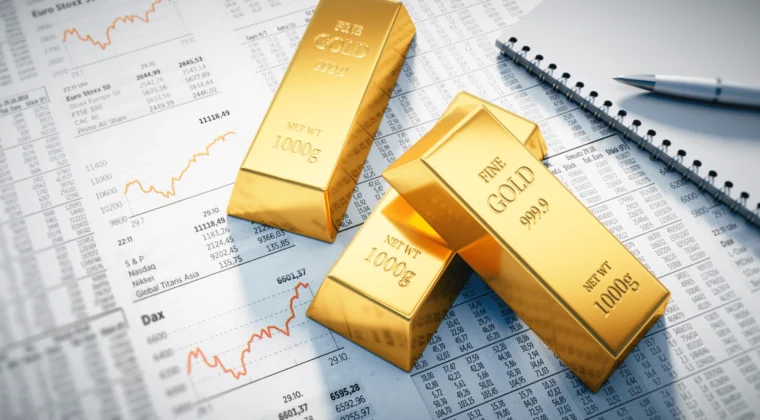
Abbasi and Company - Why Gold Rates Keep Rising and Falling – The Untold Story
Imagine waking up in the morning, opening the news, and finding that the Gold rate in Pakistan has jumped overnight. A day later, you see it dip again. For many people, this feels like a mystery—almost like gold has a mind of its own. But the truth is, gold prices don’t change randomly; they dance to the rhythm of global events, human psychology, and economic forces that often go unnoticed.
In this guide, we’ll go beyond the ordinary explanations and explore not just the usual supply-and-demand story, but also the hidden factors—like why wedding seasons matter more in South Asia than in the West, or why even the whisper of a global crisis makes gold glitter more brightly. By the end, you’ll not only understand the ups and downs of gold prices but also gain insights that can help you time your investment smarter.
1. Gold Is More Than Just Metal – It’s Emotion and Trust
Unlike oil or wheat, gold has a unique trait: people don’t just buy it for use, they buy it for assurance. In Pakistan, a mother might invest in gold jewelry for her daughter’s dowry, while an investor might store bars in a bank vault. Both see gold not just as wealth but as security.
This emotional attachment means gold prices rise whenever trust in paper money or banks weakens. Think of gold as the "trust currency" of the world.
2. The Domino Effect of the International Market
Gold doesn’t live in isolation. The price of gold in Karachi’s Sarafa Bazaar depends heavily on what happens in London, Dubai, or New York. International gold prices are set in US dollars, so when the dollar strengthens, gold often weakens globally—and when the dollar weakens, gold shines.
But here’s the twist many don’t realize: in Pakistan, even if global prices fall, the Gold price in Pakistan can still rise if the rupee drops against the dollar. That’s why sometimes people are surprised when they hear, “Gold fell globally but rose locally.”
3. Inflation – Gold’s Silent Fuel
Think of inflation as the invisible thief that reduces the value of your money. When people see prices of food, fuel, and daily goods climbing, they rush to protect their savings by buying gold. Unlike cash, gold doesn’t rot or lose its shine—it becomes a shield.
Interestingly, in Pakistan’s history, during years of double-digit inflation, gold demand has always surged. This shows how closely the metal is tied to everyday household survival strategies.
4. Cultural Seasons and the “Wedding Effect”
Here’s something fascinating: gold prices in Pakistan often spike during wedding seasons—not because global demand changes, but because millions of families in South Asia see gold jewelry as a must-have for brides.
This is a cultural force unique to our region. In Europe or America, people don’t rush to buy gold jewelry for weddings, but in Pakistan, India, and Bangladesh, the demand is massive. That seasonal pressure often causes short-term price hikes.
5. Geopolitics – When Fear Makes Gold Sparkle
Wars, political instability, or even rumors of global conflicts can make investors panic. And when fear spreads, people search for safety—and that safety is almost always gold.
For example, during the Russia-Ukraine war and recent Middle East tensions, gold saw immediate upward movements. Why? Because gold has always been the “fear barometer” of the world economy.
6. Central Banks and Hidden Hands
Another factor rarely discussed is how central banks influence gold rates. Countries like China, Russia, and even India keep huge reserves of gold. When these banks buy gold in bulk, global prices rise. When they sell, prices can cool down.
This hidden hand isn’t often visible to everyday investors in Pakistan, but it quietly reshapes the gold market worldwide.
7. Technology and Mining – The Supply Side Story
While demand mostly drives prices, supply cannot be ignored. Gold mining isn’t easy; new mines are rare, and extracting gold is expensive. Any disruption in mining countries like South Africa or Australia affects global supply. And because gold is limited, it often feels like its value naturally tends to climb in the long run.
8. Why Gold Rates in Pakistan Move Faster
Now, let’s zoom in on Pakistan. Unlike developed countries, Pakistan’s gold market reacts not just to global prices but also to currency instability, political uncertainty, and cultural demand. A single rupee depreciation can raise prices instantly. This makes the Gold rate in Pakistan more volatile compared to many other countries.
Another interesting fact: because gold here is mostly imported, any import restrictions, government duties, or trade barriers can directly cause sudden jumps in price.
9. Psychology of Small Investors
Finally, one underrated factor is pure psychology. In Pakistan, many small investors rush to buy gold when prices are high (fearing they’ll go higher) and sell when prices dip (fearing they’ll go lower). This herd mentality can itself create short-term swings in the market.
Conclusion – Reading the Golden Waves
Gold is not just a metal, and its price movements are not random. They’re shaped by human emotions, global politics, inflation, currency exchange, and even cultural traditions like weddings.
The next time you hear that the Gold rate in Pakistan has jumped or dropped, you’ll know it’s not just a number—it’s a reflection of everything from global wars to the rupee’s strength, from a mother saving for her daughter’s wedding to a billionaire hedging against inflation.
Gold doesn’t just shine in jewelry boxes; it shines as a mirror of the world’s fears, hopes, and economies. And that’s why its price is always moving—sometimes slowly, sometimes dramatically, but always meaningfully.